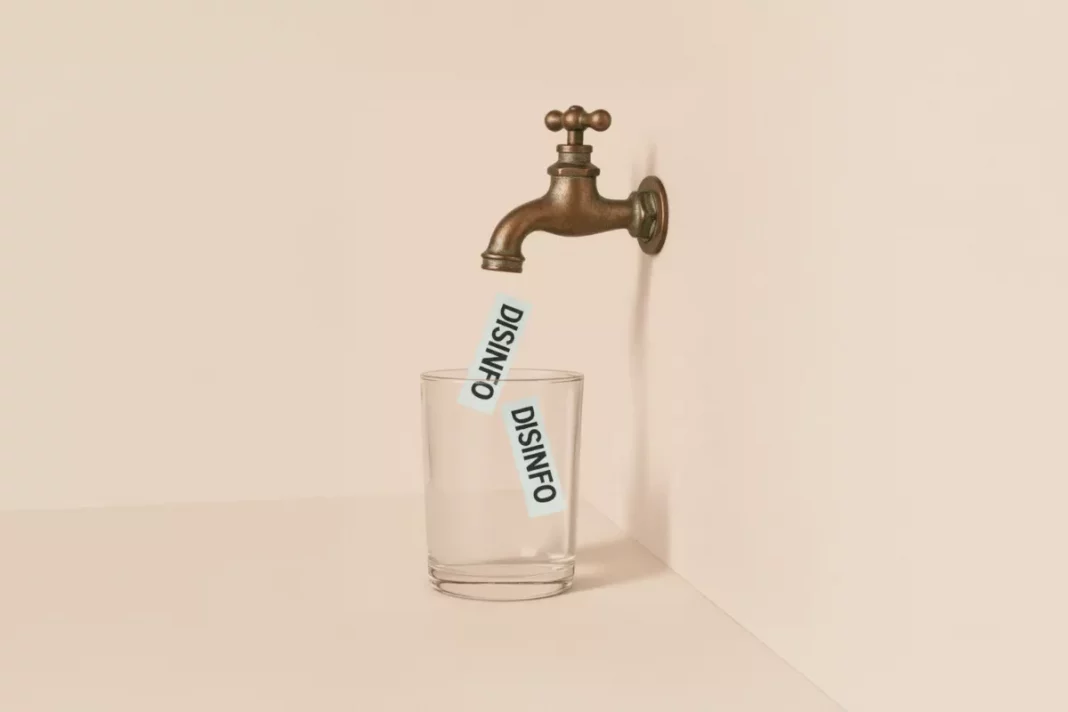By EUvsDisinfo
On 30 September 2025, Russia celebrated the anniversary of the ‘reunification of new regions’ – how pro-Kremlin disinformation refers to the occupation of parts of Ukraine’s Donetsk, Luhansk, Zaporizhzhia, and Kherson regions. To mark the occasion, Russia minted coins depicting Ukrainian lands and organised lavish concerts where top Russian celebrities praised the Moscow’s ‘care’ for the occupied territories. Through these carefully choreographed events, the Kremlin sought to project an image of stability and prosperity – a propaganda performance meant to disguise the harsh reality on the ground that is far from that gilded picture.
A telling example of what life is really like in the occupied territories is the ongoing water crisis. Ever since Russia’s first invasion in 2014, these regions have faced major drinking water shortages – a problem that has worsened further since 2022 and now causes the Kremlin a major headache. Its self-prescribed medicine: a steady stream of propaganda and disinformation.
Crimea and the myth of ‘water ecocide’
Until 2014, Crimea received 85% of its water through the North Crimean Canal, a major hydraulic facility that diverted water from the Dnipro River to the peninsula. Following the occupation and Russia’s refusal to negotiate or pay for this valuable resource, Ukraine cut off the water supply to Crimea and built a temporary dam in the Kherson region.
For a time, Crimea’s reservoirs allowed the Kremlin to downplay the issue. However, military demands soon unsettled Crimea’s water balance. The Russian army occupying Crimea used unsustainable amounts of water for its own needs and artificial population growth on the peninsula due to mass Russian resettlement also put pressure on resources. By 2016, the shortage was severe enough for Moscow to turn the problem into a political weapon. At a UN Security Council meeting in November 2016, Russian representative Pyotr Ilyichev accused Ukraine of conducting a ‘water blockade’ that the allegedly undermined human rights and international norms. The accusation ignored one key fact: according to international law, an occupying state bears responsibility for providing a population with basic needs.
Since then, Russia has built an elaborate narrative of Ukraine’s supposed ‘water ecocide’ and even filed a lawsuit with the European Court of Human Rights (ECHR). When the Court ultimately rejected Russia’s lawsuit in 2023, Kremlin media largely ignored the outcome. The disinformation value of the case had already been extracted — reinforcing Russia’s favourite storyline of victimhood and moral superiority in the face of so-called Western injustice.
Blaming the West, promising miracles
Aside from faulting Ukraine, the Kremlin has also tried to blame the ‘evil and aggressive West’ as the alleged culprit, claiming ‘the water blockade of Crimea is part of the anti-Russian strategy’ carried out by the EU and the US. Other narratives bordered on the absurd: since the Dnipro River originates in Russia, propagandists argued, its water ‘belongs’ to Moscow. They even threatened to ‘cut the river off’ from Ukraine.
To mask the worsening reality, pro-Kremlin disinformation channels flooded audiences with promises of engineering miracles. The Kremlin promised to build an underwater tunnel under the Black Sea to supply Crimea with Russian water. They came up with the idea of extracting water from the bottom of sea caves, where ‘fresh springs gush directly from the bottom of the Black Sea’. They even said they would send an airplane that would ‘induce rain by knocking precipitation from clouds above reservoirs’.

None of these promises were fulfilled. The local population grew accustomed to scheduled water outages and endless lines at tankers that delivered drinking water several times a week. Meanwhile, the Russian army was drilling new wells and constructing water pipelines for its own needs as it prepared for its full-scale invasion.
Water as a pretext for war
By 2022, water propaganda turned into justification of military aggression. Russia made no secret that one its military goals in Ukraine was to create a land corridor from Russia to occupied Crimea and to gain control over the North Crimean Canal – this was presented as a ‘liberation’ mission to restore water to the peninsula. Within days, Russian forces occupied the hydraulic facilities in Ukraine’s Kherson region, and state media celebrated the move as a triumph: Moscow had supposedly kept its promise to save Crimea from thirst.
The idea that restoring Crimea’s water supply could somehow legitimise Russia’s invasion even appeared in Western discussions. In October 2022, Elon Musk included the guarantee of water supply to Crimea as one of the points of his controversial Russia-Ukraine peace proposal he floated on his Twitter account.
In reality, this so-called victory turned out to be hollow. Even Kremlin commentators admitted that water losses in the canal reached 40 per cent, blaming Kyiv for not maintaining infrastructure that had been under Russian occupation for years.
Since then, water supplies have dwindled in Ukraine’s southern regions, including in Crimea. In 2023, while holding back a Ukrainian counteroffensive, the Russian army blew up the Kakhovka dam. This created another emergency for all facilities that relied on Dnipro water. With no one left to blame for Crimea’s ‘water ecocide’, Russian authorities started hushing up Crimea’s water supply problem another form of control in the Kremlin’s manipulation playbook.
Thirsty patriots
In 2025, the water supply issue in the occupied parts of eastern Ukraine became critical. Independent reporting paints a bleak picture that contrasts sharply with official narratives. Large cities like Donetsk and Mariupol only receive water for a few hours every two or three days. Hospitals, kindergartens, and schools are among the first to suffer when water stops flowing — entire districts rely on trucked-in water that arrives only once or twice a week, forcing residents to queue for hours with plastic containers just to fill a few bottles.
The Kremlin has launched another FIMI campaign dismissing this humanitarian catastrophe as ‘temporary difficulties and minor inconveniences’. State outlets report that ‘Putin is personally addressing the problem’ and that ‘kilometres of main water pipelines are being repaired’. The Kremlin has promised Donbas massive infrastructure projects, including desalinating the water of the Sea of Azov ‘like in Israel or South Korea’. They also claim that ‘very soon’ the region will have so much water that new tourist destinations and luxury resorts will be built right on the front lines.
At the same time, commentators add that the population must approach the ‘unpleasant water situation’ with heroic stoicism for the sake of the great Empire: ‘There’s nothing left to do but be patient and wait. May this patience be rewarded as soon as possible!’ Meanwhile, in September 2025, information emerged that Russia plans to criminalise publishing news about the lack of water. The Kremlin’s classic tactic is not to solve the problem, but to hush it up while perpetuating the myth of a prosperous Russia.
Managing perception, not reality
From Crimea to Donbas, water has become one of Moscow’s favourite instruments of manipulation. Each stage of the crisis — from the myth of Ukraine’s ‘water blockade’ to the fantasy of underwater tunnels and the rhetoric of ‘heroic patience’ — reflects a single pattern: the Kremlin’s strategy of masking governance failures through propaganda. Where Russia cannot deliver stability or basic services, it delivers stories. The taps may run dry, but the propaganda never does.
By EUvsDisinfo





